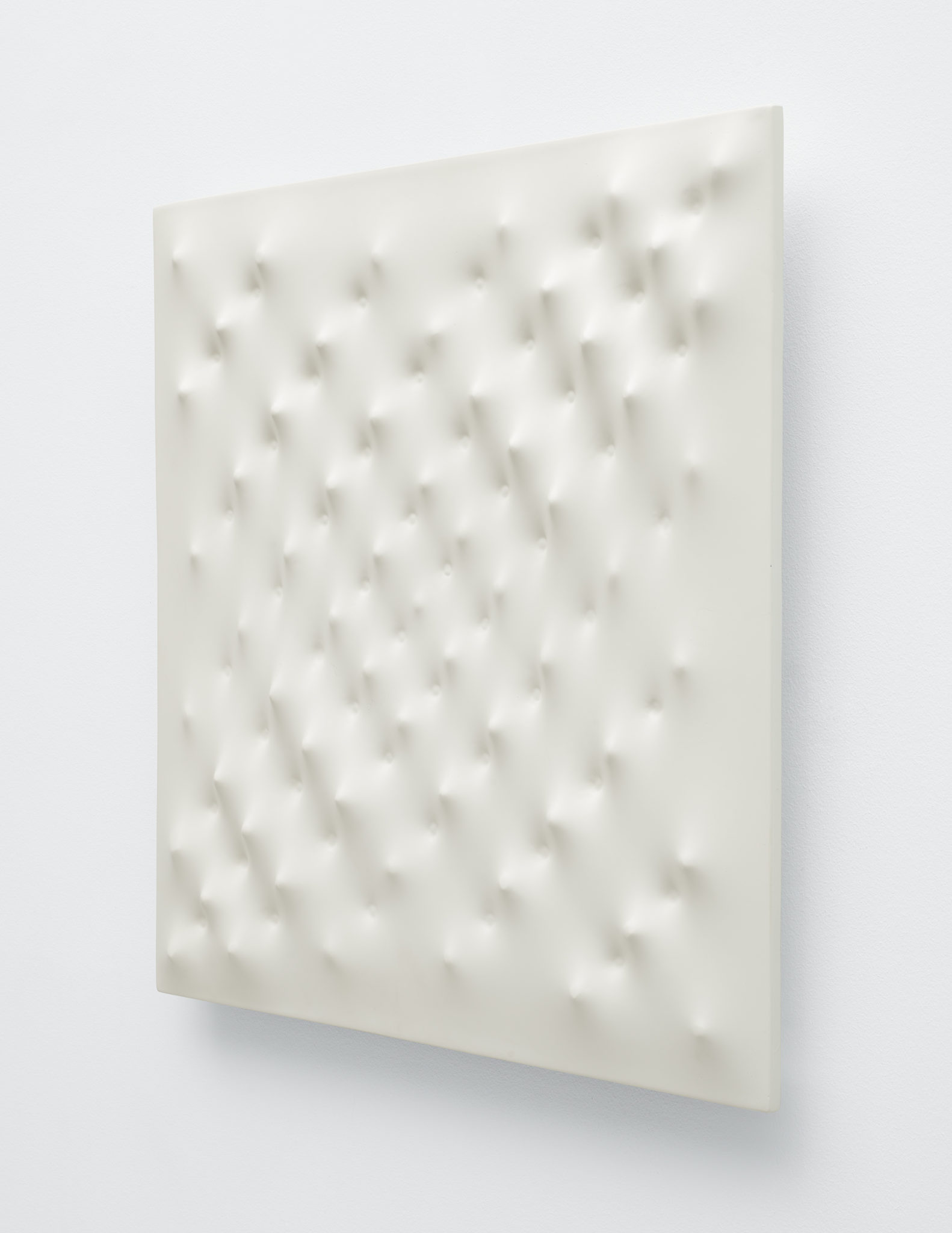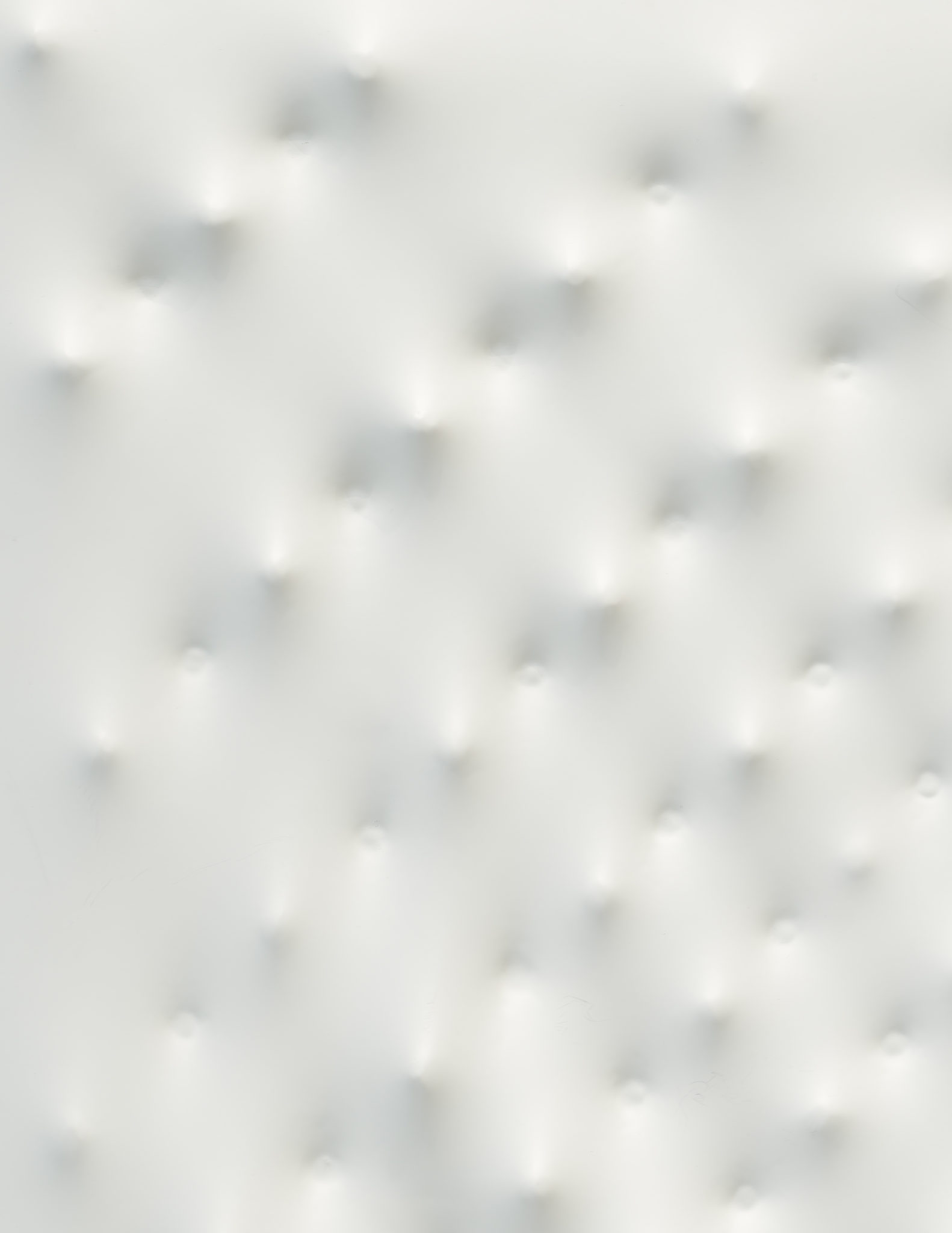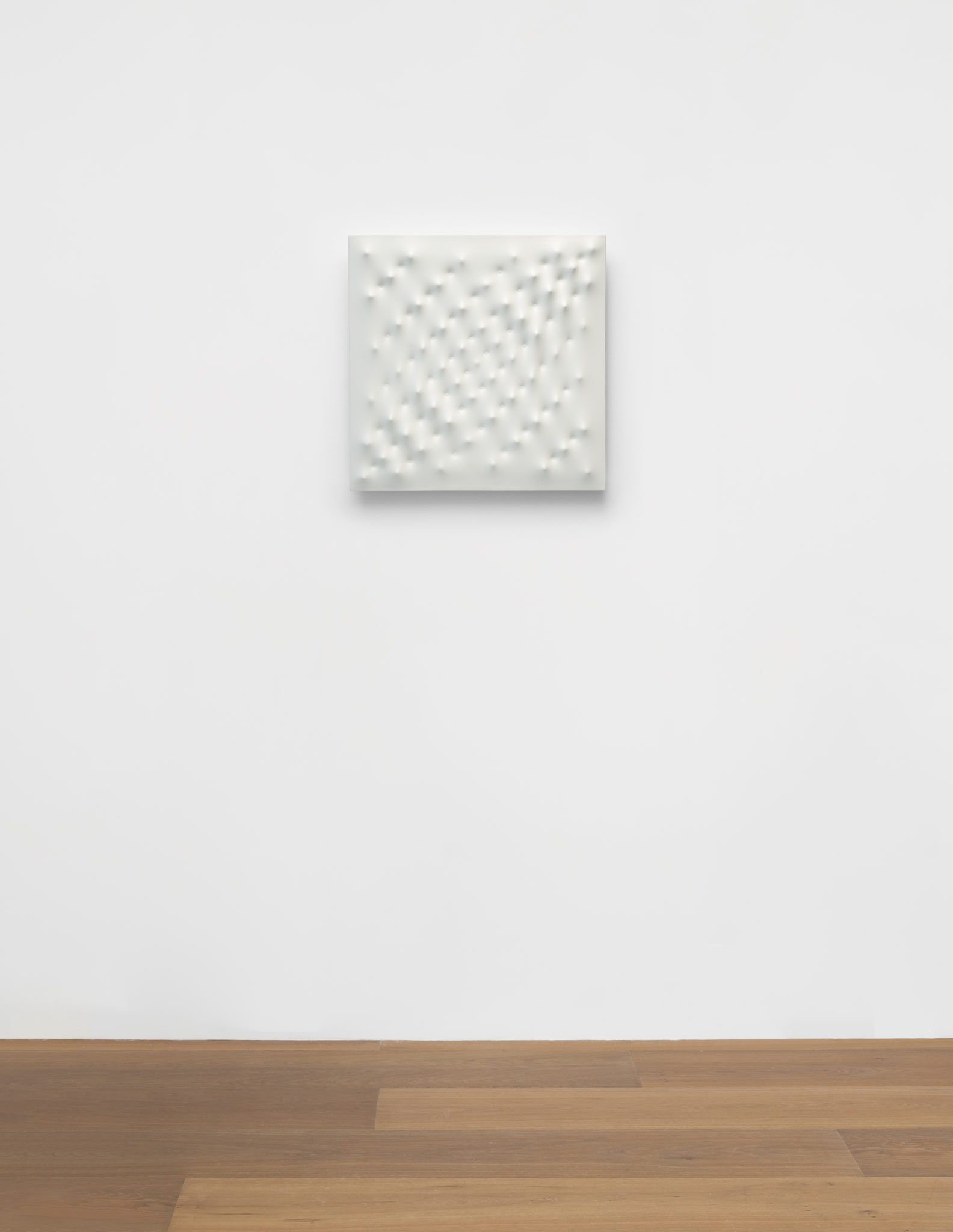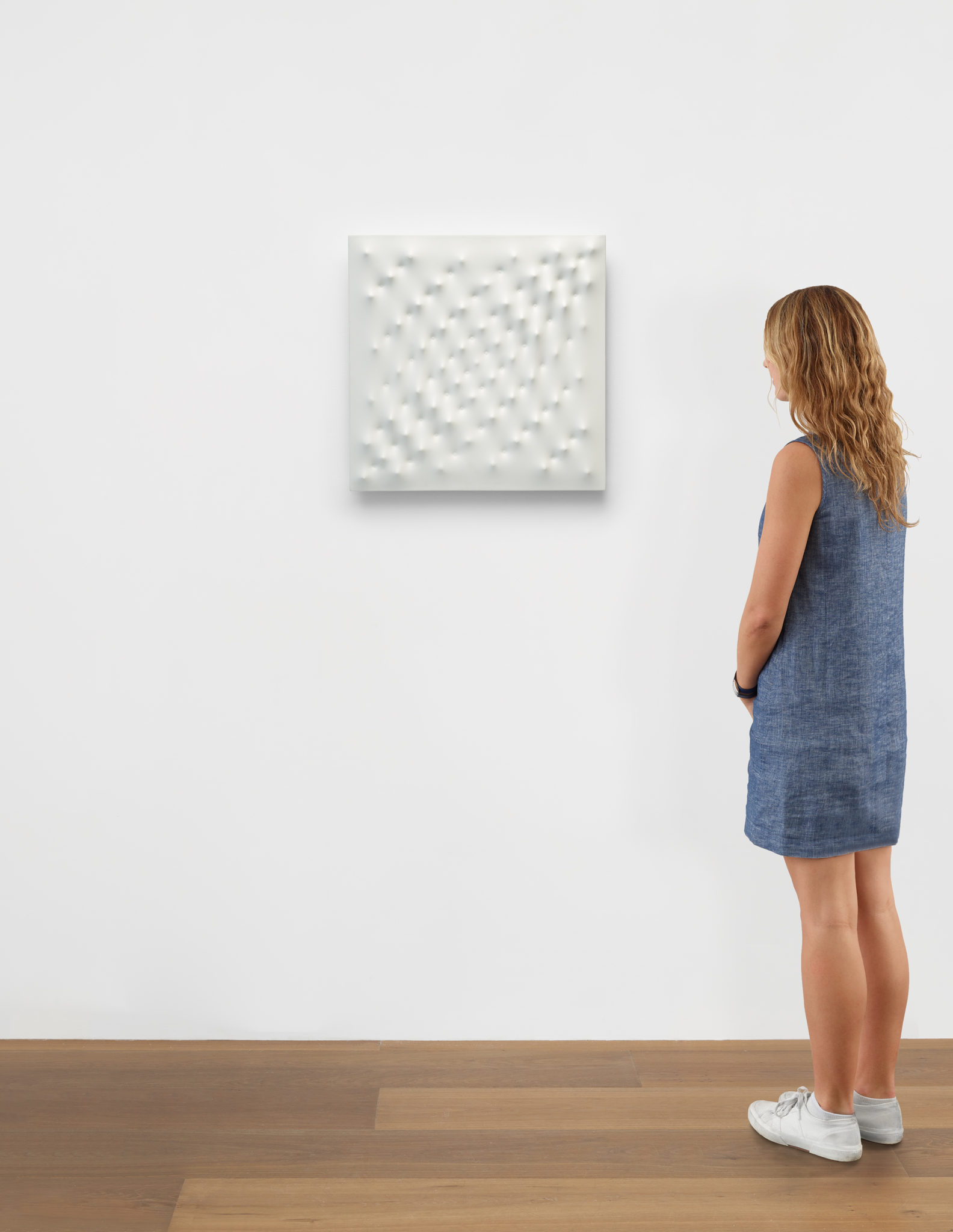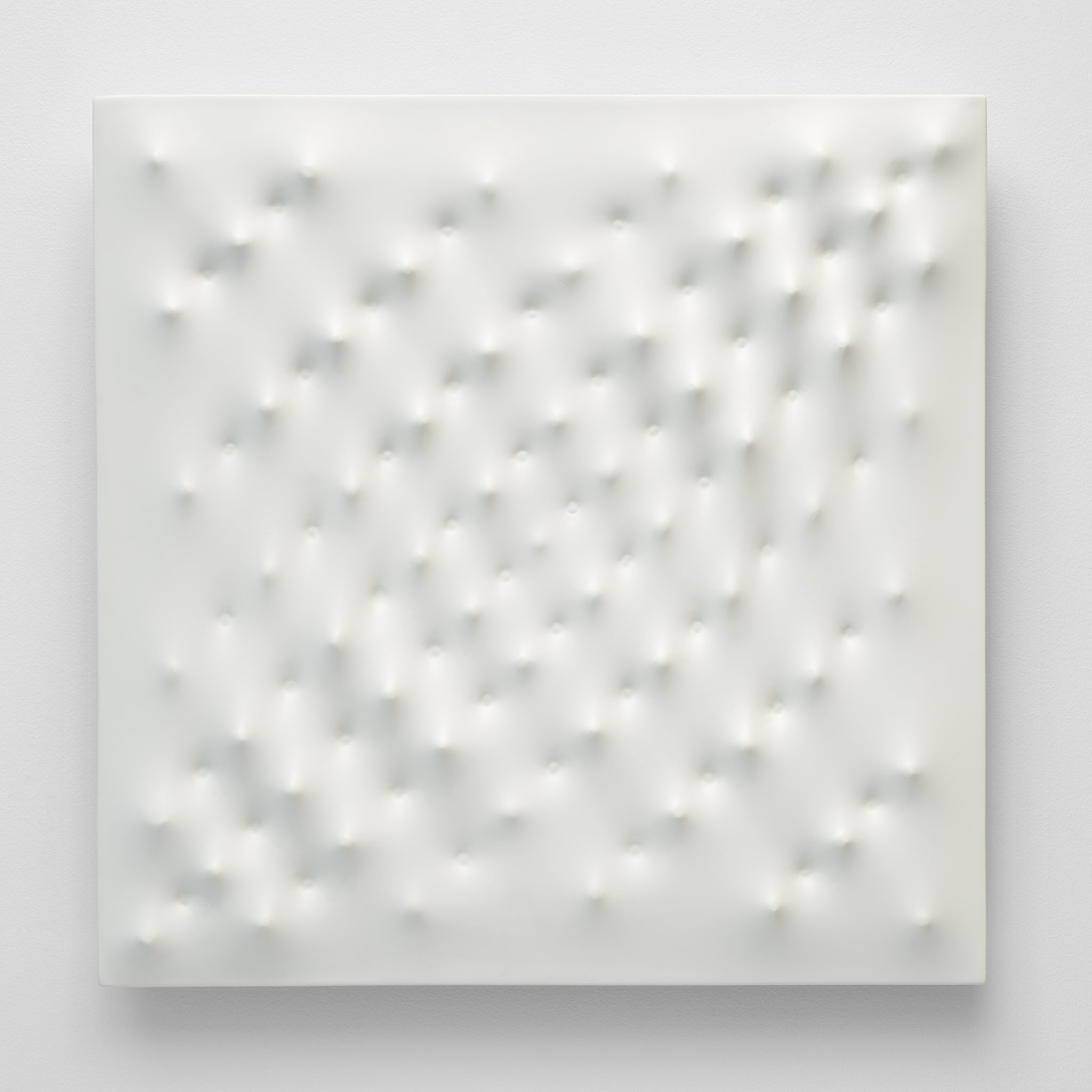Enrico Castellani
Superficie bianca, 2006
Enamel on cast aluminum
23 x 23 x 2 inches (58.5 x 58.5 x 5 cm)
Seven versions (3 silver, 3 white, 1 red), with 2 AP
© Fondazione Enrico Castellani / Artists Rights Society (ARS), New York / SIAE, Rome
Photo: Tom Powel Imaging
…[A] true and profound attitude of the mind, contemplating the mystery of matter, of space, and of time and of their magnificent perception.
—Mario Luzi
In 2006, Enrico Castellani at age 76 embarked on a new groundbreaking direction when he began a body of work in cast aluminum. Bringing his renowned Superficie (surface) series into the realm of sculpture, this series has never been exhibited and is being offered for the first time. The present work, Superficie bianca (2006) is among the first of this new group and was created the year that Castellani initiated this inventive series. Cast in an edition of 7, (2 silver, 3 white, and 2 red, with 2 artist’s proofs), the complex, tensile surface of this work transmutes the artist’s lifelong investigation of topography from the domain of painting into a new, fully sculptural form, furthering his experimental fusion of space, light, and architecture. The white surfaces of Superficie bianca channel light across its patterned convex and concave curves, which constantly transform according to shifts in its illumination and the position of the viewer’s gaze.
In 1959, Castellani created his first Superficie by stretching a monochrome canvas over a textured support—originally an arrangement of hazelnuts. Together with his friends, fellow artists Piero Manzoni (with whom he founded the experimental journal Azimuth and Galleria Azimut, both 1959–60) and Lucio Fontana, he pushed against the traditional conception of a work as a transparent window, instead emphasizing the physical presence of its surface and the unity of all dimensions, both interior and exterior. For the next six decades, Castellani continued to make Superficie. These dynamic topographies constitute a continuous body of work—the most important within the artist’s oeuvre. Further extending his ambitions with a breakthrough into a new medium, the complex surfaces of Superficie bianca offer an inspiring expression of what Castellani called “the concreteness of the infinite.”

